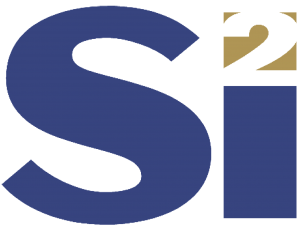Microsoft, GLOBALFOUNDRIES Join Si2 OpenAccess Coalition
Growing Membership Shows Ongoing Vertical Integration in IC Design
Austin, Texas—Microsoft Corporation and GLOBALFOUNDRIES have joined Silicon Integration Initiative’s OpenAccess Coalition, a diverse group of international semiconductor companies that support the OpenAccess design database application programming interface.
OpenAccess, which was introduced in 2002, is the most widely used IC design database and is currently supported by its 43 members, representing semiconductors manufacturers and foundries, fabless companies, EDA software providers and systems houses. The OpenAccess database provides EDA software tools with immediate design flow interoperability, saving members time and money.
John Ellis, Si2 president and CEO, said that the recent addition of Microsoft—and Google last year—illustrates the continuing trend of IC design vertical integration. He cited a recent Si2 industry survey which showed “that more than 80 percent of end users develop specialized, internal design tools. OpenAccess allows these home-grown tools to fit into the company’s own, optimized design flow, integrating the best-in-class EDA tools without sacrificing interoperability or performance.
“These end-users are often most interested in the OpenAccess scripting-language interface, which gives engineers direct access into their OA-based design through, for example, the Python programming language,” Ellis said. “This makes their design directly accessible from the console, or rapidly prototyped scripts. Python is well-known and widely adopted by programmers, and has many libraries and tools available, including popular AI development toolkits. The new code release supports these and provides a path toward developing machine-learning-based EDA tools which can make use of the OA database for training.”
Si2 recently introduced OpenAccess Data Model 6, the first major code revision since 2014. DM6 features oaPartitions, a new addition which allows multiprocessing capability to be applied simultaneously to smaller, partitioned regions in large chip designs. Early-stage performance benchmarking by Dr. Rhett Davis from N.C. State University, which was presented at the recent Design Automation Conference, showed under certain circumstances a more than 10x processing speed improvement over the prior version of OpenAccess. DM6 provides a path to higher-efficiency design. Its multiprocessing capability enables cloud-centric design flows for EDA tools which are based on the OpenAccess database.

 Udi Landen is Vice President of Engineering at Qualcomm Technologies, Inc. In his current role, Landen provides technical, management and business leadership for engineering teams at various international sites that focus on mobile and computing design enablement and CAD methodology automation roadmaps. Prior to joining Qualcomm in 2013, Landen held executive and leadership roles at Altera Corp., Mercury Interactive and Cadence Design Systems. He is a graduate of the Technion, Israel Institute of Technology.
Udi Landen is Vice President of Engineering at Qualcomm Technologies, Inc. In his current role, Landen provides technical, management and business leadership for engineering teams at various international sites that focus on mobile and computing design enablement and CAD methodology automation roadmaps. Prior to joining Qualcomm in 2013, Landen held executive and leadership roles at Altera Corp., Mercury Interactive and Cadence Design Systems. He is a graduate of the Technion, Israel Institute of Technology. Seungbum Ko is vice president of the Samsung Electronics Design Technology Team. He is responsible for all memory design methodology activities for the Samsung memory division, and also manages the relationships between memory division and EDA vendors. A 21-year veteran at Samsung, Ko’s expertise includes development of SDRAM, DDR, DDR2, DDR3, LPDD2, LPDDR3 and LPDDR4 devices. His internal honors include the Proud Samsung Award, the Jang Young-sil Award, and the Memory Award.
Seungbum Ko is vice president of the Samsung Electronics Design Technology Team. He is responsible for all memory design methodology activities for the Samsung memory division, and also manages the relationships between memory division and EDA vendors. A 21-year veteran at Samsung, Ko’s expertise includes development of SDRAM, DDR, DDR2, DDR3, LPDD2, LPDDR3 and LPDDR4 devices. His internal honors include the Proud Samsung Award, the Jang Young-sil Award, and the Memory Award.
